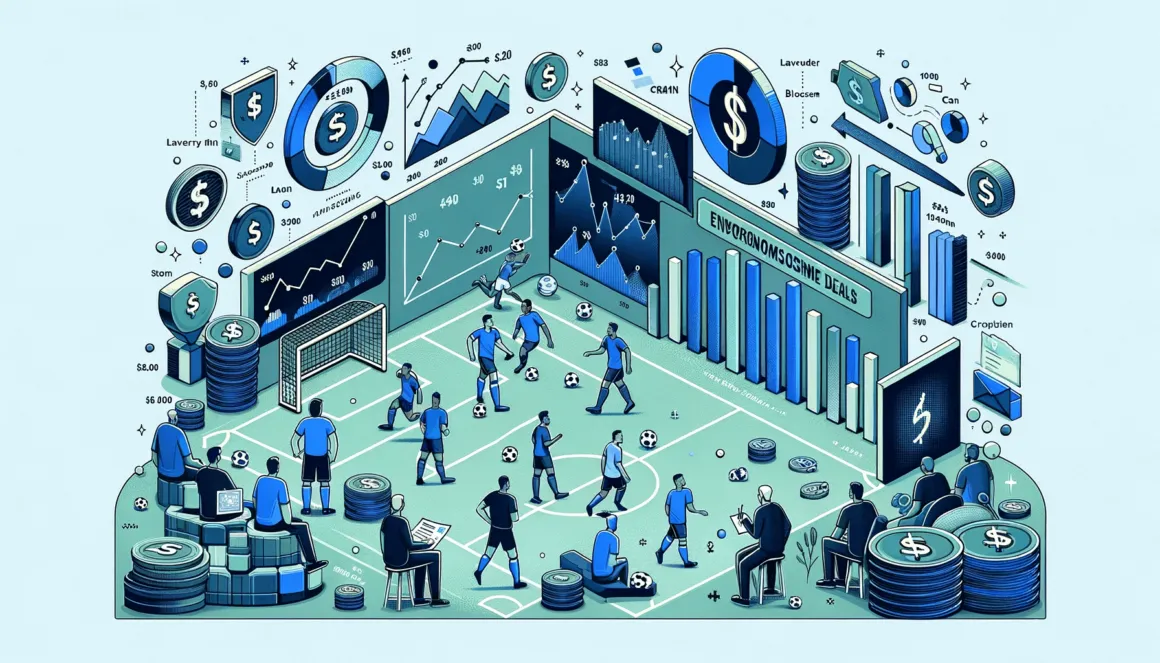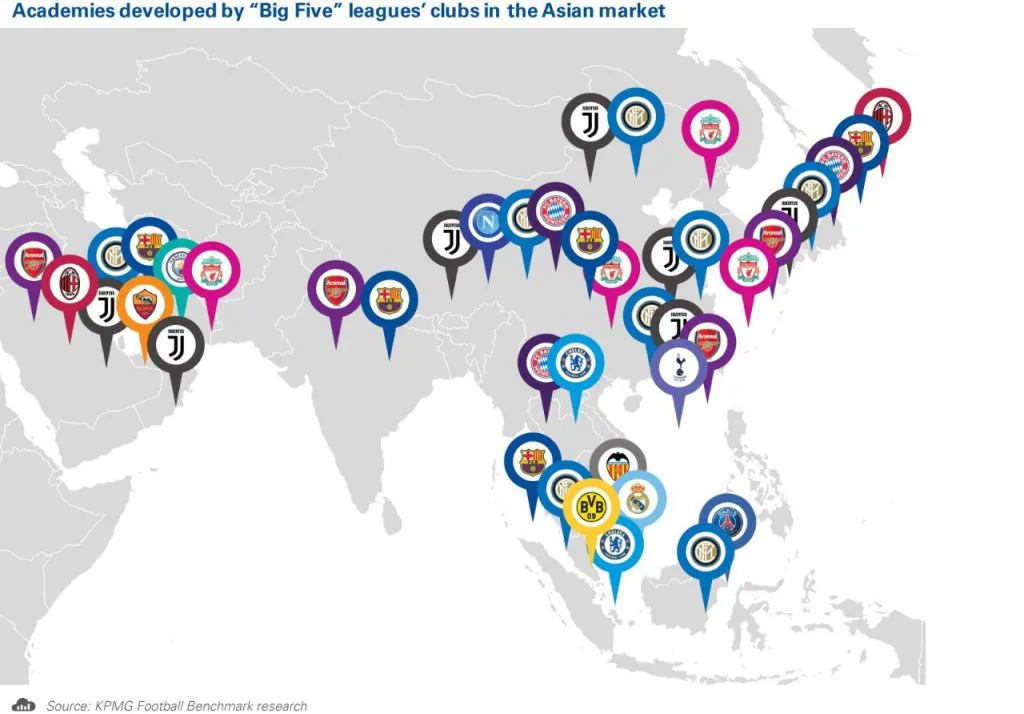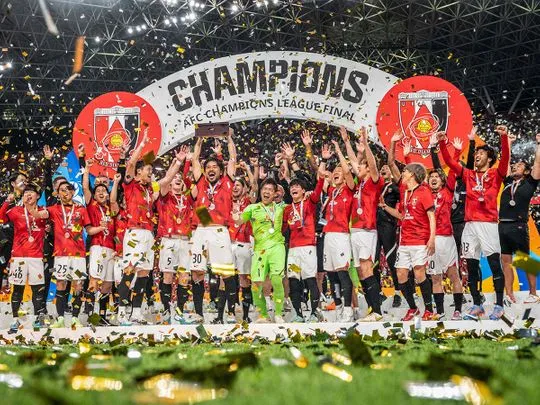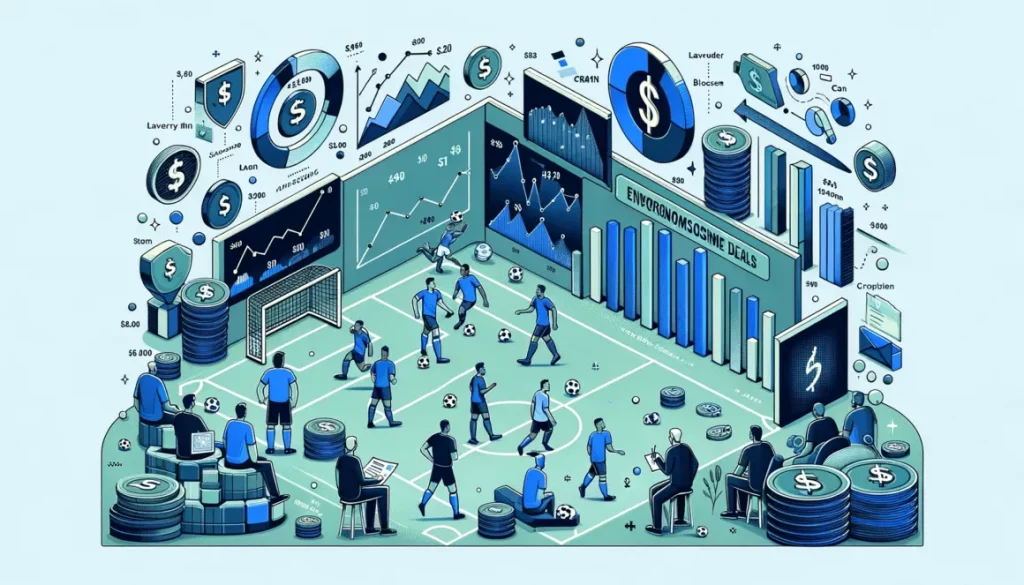Soccer, also known as football, is the most popular sport in the world. With billions of fans across the globe, it’s no surprise that the players who make it to the professional level are some of the most well-known and highly paid athletes in the world. But just how much do soccer players make? This question has been a topic of interest for both fans and critics alike, and the answer may surprise you.
In this article, we will take an in-depth look at the salaries of professional soccer players, from the top leagues around the world to the lesser-known ones. We will explore what factors contribute to their earnings, the discrepancies between male and female players, and the impact of endorsement deals on their overall income. So, if you’re curious about the financial side of the beautiful game, keep reading.

The Top Leagues: Where the Big Money Is
The best soccer players in the world can be found playing in the top leagues, which are considered the most prestigious and competitive in the sport. These leagues include the English Premier League, Spanish La Liga, Italian Serie A, German Bundesliga, and French Ligue 1. These leagues have the highest number of viewers and generate the most revenue, offering the biggest paychecks for their players.
EPL: The Richest League of Them All
The English Premier League (EPL) is the top-tier professional soccer league in England, with 20 teams competing for the title each season. It is also the most-watched sports league in the world, broadcasted in over 190 countries. The league’s popularity is reflected in the salaries of its players, making it the richest league in the world.
According to a study by Sporting Intelligence, the average annual salary for a player in the Premier League during the 2019-2020 season was £3.12 million ($4.1 million). However, this number is significantly skewed by the top earners in the league, such as Manchester United’s Paul Pogba, who reportedly earns around £15 million ($19.6 million) per year.
The table below shows the top 10 highest-paid players in the Premier League for the 2019-2020 season, according to their annual salaries.
| Rank | Player | Club | Annual Salary (in millions) |
|---|---|---|---|
| 1 | Kevin De Bruyne | Manchester City | £16.2 ($21.2) |
| 2 | Mesut Ozil | Arsenal | £11.5 ($15) |
| 3 | Anthony Martial | Manchester United | £10.4 ($13.6) |
| 4 | Raheem Sterling | Manchester City | £10.4 ($13.6) |
| 5 | Paul Pogba | Manchester United | £10.4 ($13.6) |
| 6 | David de Gea | Manchester United | £9.9 ($13) |
| 7 | Sergio Aguero | Manchester City | £9.9 ($13) |
| 8 | Roberto Firmino | Liverpool | £9.36 ($12.2) |
| 9 | Mohamed Salah | Liverpool | £9.36 ($12.2) |
| 10 | Pierre-Emerick Aubameyang | Arsenal | £9.36 ($12.2) |
Note: All salaries are in British pounds (£) and have been converted to US dollars ($) for comparison purposes.
As you can see, the top earners in the Premier League make significantly more than the average salary. This is due to a combination of factors such as their performance on the field, marketability, and endorsement deals.
The Impact of Marketability and Endorsement Deals
In the world of professional sports, being marketable plays a huge role in the income of players. This is especially true for soccer players who have a global fan base. Companies are always on the lookout for popular players to endorse their products, and the Premier League is no exception.
One example of a highly marketable player in the Premier League is Manchester United’s Paul Pogba. Despite not having the highest number of goals or assists in the league, Pogba’s brand value and social media following make him one of the most sought-after players for endorsement deals. According to Forbes, Pogba earns around $4.5 million from endorsement deals alone.
Other factors that contribute to the marketability of players include their nationality, playing style, and off-field behavior. For example, players like David Beckham, Cristiano Ronaldo, and Lionel Messi have been able to secure lucrative endorsement deals due to their immense popularity and global appeal.
La Liga: Home to Some of the Best Players in the World
La Liga is the top professional soccer league in Spain and is home to some of the most talented and skilled players in the world. It is also one of the most-watched leagues globally, with an estimated 2.7 billion viewers in the 2019-2020 season. However, despite its popularity and impressive talent pool, the salaries of players in La Liga are lower compared to the Premier League.
According to Sporting Intelligence, the average annual salary in La Liga for the 2019-2020 season was €3.6 million ($4.3 million). This is significantly lower than the Premier League’s average, but it’s important to note that the top earners in La Liga still make a considerable amount of money.
The table below shows the top 10 highest-paid players in La Liga for the 2019-2020 season, according to their annual salaries.
| Rank | Player | Club | Annual Salary (in millions) |
|---|---|---|---|
| 1 | Lionel Messi | Barcelona | €70.2 ($83.6) |
| 2 | Antoine Griezmann | Atletico Madrid | €28.8 ($34.3) |
| 3 | Eden Hazard | Real Madrid | €19.2 ($22.9) |
| 4 | Gareth Bale | Real Madrid | €17.5 ($20.9) |
| 5 | Luis Suarez | Atletico Madrid | €16.2 ($19.3) |
| 6 | Toni Kroos | Real Madrid | €15.6 ($18.6) |
| 7 | Sergio Ramos | Real Madrid | €14.9 ($17.8) |
| 8 | Frenkie de Jong | Barcelona | €12.9 ($15.4) |
| 9 | Karim Benzema | Real Madrid | €12.6 ($15) |
| 10 | Luka Jovic | Real Madrid | €12.6 ($15) |
Note: All salaries are in euros (€) and have been converted to US dollars ($) for comparison purposes.
As you can see, Lionel Messi is the highest-paid player in La Liga, earning over $80 million per year. However, unlike the Premier League, the top 10 earners in La Liga are dominated by players from the same three clubs: Barcelona, Real Madrid, and Atletico Madrid. This is due to the fact that these clubs have significantly higher revenues compared to other teams in the league.
The Discrepancy Between Male and Female Players in La Liga
One issue that has been heavily discussed in recent years is the gender pay gap in professional sports. La Liga has faced criticism for its significant discrepancy between the salaries of male and female players. According to a report by ESPN, the average salary for a female player in La Liga during the 2019-2020 season was €27,000 ($32,200), while male players’ average salary was around €3.6 million ($4.3 million).
This huge difference has sparked debates about equal pay and opportunities for female players in the league. In response, La Liga has implemented measures to address this issue, such as increasing the minimum salary for female players and investing in women’s soccer development programs.
Serie A: Italy’s Premier Professional Soccer League
Serie A is the top-tier professional soccer league in Italy and is home to some of the most passionate fans in the world. It is known for its intense rivalries, iconic stadiums, and talented players. However, when it comes to salaries, Serie A falls behind the Premier League and La Liga.
According to Sporting Intelligence, the average annual salary for a player in Serie A during the 2019-2020 season was €2.87 million ($3.42 million). This is significantly lower than the Premier League and La Liga, but still higher than other top leagues in Europe.
The table below shows the top 10 highest-paid players in Serie A for the 2019-2020 season, according to their annual salaries.
| Rank | Player | Club | Annual Salary (in millions) |
|---|---|---|---|
| 1 | Cristiano Ronaldo | Juventus | €31.9 ($38.1) |
| 2 | Matthijs de Ligt | Juventus | €12.5 ($14.9) |
| 3 | Romelu Lukaku | Inter Milan | €7.36 ($8.77) |
| 4 | Paulo Dybala | Juventus | €7.26 ($8.66) |
| 5 | Gonzalo Higuain | Inter Miami FC | €7.08 ($8.44) |
| 6 | Miralem Pjanic | Barcelona | €6.84 ($8.16) |
| 7 | Aaron Ramsey | Juventus | €6.84 ($8.16) |
| 8 | Alex Sandro | Juventus | €5.76 ($6.87) |
| 9 | Douglas Costa | Bayern Munich | €5.4 ($6.44) |
| 10 | Juan Cuadrado | Juventus | €5.4 ($6.44) |
Note: All salaries are in euros (€) and have been converted to US dollars ($) for comparison purposes.
It’s worth noting that the top earners in Serie A are dominated by players from Juventus, one of the most successful and wealthiest clubs in the league. This is due to the significant difference in revenue generated by top clubs like Juventus compared to other teams in the league.
The Role of Revenue Sharing in Salaries
One interesting aspect of the Italian league is the revenue-sharing model implemented by Serie A. Unlike other leagues where clubs negotiate their TV rights individually, in Serie A, clubs share the TV rights revenue equally. This means that even smaller teams receive a significant portion of the revenue generated by top clubs like Juventus, which helps to level the playing field.
However, this model has faced criticism from some clubs, particularly those who generate higher revenues. They argue that they should receive a larger share of the TV rights revenue since they contribute more to the league’s overall success.
Bundesliga: Germany’s Premier Soccer League
The German Bundesliga is known for its fast-paced and exciting style of soccer, attracting fans from all over the world. It is also one of the most successful leagues in Europe, with six different teams winning the title in the last ten seasons. However, when it comes to salaries, the Bundesliga falls behind the other top leagues in Europe.
According to Sporting Intelligence, the average annual salary for a player in the Bundesliga during the 2019-2020 season was €2.46 million ($2.94 million). This is significantly lower than the Premier League, La Liga, and Serie A, but still higher than some other European leagues.
The table below shows the top 10 highest-paid players in the Bundesliga for the 2019-2020 season, according to their annual salaries.
| Rank | Player | Club | Annual Salary (in millions) |
|---|---|---|---|
| 1 | Robert Lewandowski | Bayern Munich | €15.6 ($18.6) |
| 2 | Thomas Muller | Bayern Munich | €13.8 ($16.5) |
| 3 | Leroy Sane | Bayern Munich | €12.5 ($14.9) |
| 4 | David Alaba | Bayern Munich | €10.4 ($12.4) |
| 5 | Manuel Neuer | Bayern Munich | €9.36 ($11.2) |
| 6 | Marco Reus | Borussia Dortmund | €8.64 ($10.3) |
| 7 | Philippe Coutinho | Bayern Munich | €8.19 ($9.78) |
| 8 | Timo Werner | Chelsea | €8.15 ($9.73) |
| 9 | Jadon Sancho | Borussia Dortmund | €8.15 ($9.73) |
| 10 | Joshua Kimmich | Bayern Munich | €7.19 ($8.59) |
Note: All salaries are in euros (€) and have been converted to US dollars ($) for comparison purposes.
Similar to the other top leagues, the top earners in the Bundesliga are dominated by players from top clubs like Bayern Munich and Borussia Dortmund. These clubs generate a significant amount of revenue, which translates into higher salaries for their players.
Ligue 1: France’s Premier Soccer League
The French Ligue 1 is the top professional soccer league in France, with 20 teams competing for the title each season. It may not have the same level of global appeal as the other top leagues, but it still boasts some talented players and passionate fans. However, when it comes to salaries, Ligue 1 falls behind the other top leagues in Europe.
According to Sporting Intelligence, the average annual salary for a player in Ligue 1 during the 2019-2020 season was €1.4 million ($1.67 million). This is significantly lower than the Premier League, La Liga, Serie A, and the Bundesliga. The lower average salary in Ligue 1 can be attributed to the league’s overall lower revenue compared to its European counterparts.
The table below shows the top 10 highest-paid players in Ligue 1 for the 2019-2020 season, according to their annual salaries.
| Rank | Player | Club | Annual Salary (in millions) |
|---|---|---|---|
| 1 | Kylian Mbappe | Paris Saint-Germain | €19.6 ($23.4) |
| 2 | Neymar Jr. | Paris Saint-Germain | €19.5 ($23.3) |
| 3 | Thiago Silva | Chelsea | €12.7 ($15.2) |
| 4 | Edinson Cavani | Manchester United | €10.2 ($12.2) |
| 5 | Angel Di Maria | Paris Saint-Germain | €8.64 ($10.3) |
| 6 | Marquinhos | Paris Saint-Germain | €8.2 ($9.79) |
| 7 | Wissam Ben Yedder | AS Monaco | €7.86 ($9.38) |
| 8 | Keylor Navas | Paris Saint-Germain | €7.8 ($9.31) |
| 9 | Mauro Icardi | Paris Saint-Germain | €7.52 ($9) |
| 10 | Kasper Dolberg | OGC Nice | €7.35 ($8.78) |
Note: All salaries are in euros (€) and have been converted to US dollars ($) for comparison purposes.
As you can see, the top earners in Ligue 1 are mostly players from Paris Saint-Germain (PSG), who are known for their high-spending on players. This has caused some controversy in recent years, with critics arguing that PSG’s dominance in the league is due to their financial power, rather than their performance on the field.
Other Top Leagues: The Salaries of Players Outside the Big Five
While the top leagues we’ve discussed so far offer the biggest paychecks for soccer players, there are other professional leagues worth mentioning. These leagues may not have the same level of global appeal as the top five, but they still attract talented players and generate a significant amount of revenue.
Major League Soccer (MLS): The Top Professional League in North America
Major League Soccer (MLS) is the top-tier professional soccer league in North America, with 27 teams competing for the title each season. While it may not have the same level of popularity as the European leagues, MLS has been growing in recent years, with the addition of new teams and higher attendance rates.
The average annual salary in MLS for the 2020 season was $376,174, according to the MLS Players Association. This may seem relatively low compared to the top European leagues, but it’s worth noting that MLS operates under a salary cap system, where teams cannot spend more than a certain amount on player salaries.
However, over the years, MLS has seen an increase in spending on players, particularly in designated players. These are players whose salary falls outside of the team’s salary cap, allowing teams to attract top talent from around the world. Some notable designated players in MLS include Zlatan Ibrahimovic, David Beckham, and Wayne Rooney.
Chinese Super League (CSL): The Rapidly Growing Soccer League in Asia

The Chinese Super League (CSL) is the top-tier professional soccer league in China, with 16 teams competing for the title each season. In recent years, the league has seen significant growth, attracting top players from around the world with massive salaries.
According to a report by Forbes, the average annual salary in the CSL forthe 2019 season was around $1.4 million, making it one of the highest-paying soccer leagues in the world. This sudden increase in player salaries can be attributed to the Chinese government’s initiative to invest heavily in sports, including soccer, to enhance the country’s global influence and promote domestic talent development.
Growth of Foreign Players in CSL
One of the notable aspects of the Chinese Super League is the influx of foreign players attracted by lucrative contracts. The league’s willingness to offer substantial salaries has enticed many established European and South American players to make the move to China. This trend has not only increased the overall quality of the league but has also garnered international attention and viewership.
# Impact on Domestic Talent
While the presence of foreign players has undoubtedly elevated the competitiveness and visibility of the CSL, it has also sparked discussions about its impact on the development of local talent. Critics argue that the heavy reliance on foreign stars may hinder the growth of homegrown players, as they might struggle to secure playing time amidst stiff competition from more experienced and accomplished internationals.
On the contrary, proponents believe that exposure to top-tier talent can benefit Chinese players by providing them with valuable learning opportunities and raising the overall standard of play in the league. Additionally, sharing the pitch with renowned footballers can inspire domestic prospects to improve their skills and work towards reaching the same level of success.
# Regulations on Foreign Player Quotas
To address concerns about the potential negative effects of an excessive influx of foreign players, the Chinese Football Association (CFA) has implemented regulations regarding the number of overseas players allowed in each CSL club’s matchday squad. By restricting the selection of foreign talents, the CFA aims to create a balance that promotes healthy competition while prioritizing the development of local players.
Moreover, these quotas encourage clubs to focus on nurturing young Chinese prospects through their youth academies and training programs, fostering a sustainable model for long-term success both at the domestic and international levels. By combining the allure of international stars with a commitment to developing native talent, the CSL seeks to establish itself as a competitive and respected soccer league on the global stage.
Indian Super League (ISL): Rising Soccer Power in South Asia
The Indian Super League (ISL) has been gaining prominence as one of the top professional soccer leagues in South Asia. Launched in 2014, the ISL has provided a platform for Indian footballers to showcase their talent alongside international players, elevating the level of competition in the country.
Foreign Influence in ISL
One of the key features of the Indian Super League is the significant presence of foreign players who bring experience and skill to the league. These overseas players often serve as mentors to their Indian counterparts, helping raise the overall standard of play and contributing to the development of homegrown talent.
# Impact on Grassroots Football
The influx of foreign players and coaches into the Indian Super League has had a trickle-down effect on grassroots football in the country. Their expertise and knowledge have been instrumental in shaping youth development programs and training initiatives aimed at nurturing the next generation of Indian football stars.
- Foreign Coaching Expertise: International coaches in the ISL have introduced modern training methods and tactical approaches that have trickled down to regional academies and training centers, benefiting young aspiring footballers across India.
- Inspiration for Young Players: The presence of renowned foreign players in the league serves as inspiration for young Indian talents, motivating them to pursue careers in professional soccer and strive for excellence on the field.
# Cultural Exchange and Global Collaboration
Beyond the realm of sports, the participation of foreign players in the Indian Super League has facilitated cultural exchange and global collaboration. Players from diverse backgrounds coming together to compete in the ISL have not only promoted intercultural understanding but have also forged lasting friendships and partnerships both on and off the pitch.
- Language and Communication Skills: Interactions between Indian and foreign players have created opportunities for language learning and improved communication skills, breaking down barriers and fostering camaraderie within teams.
- Community Engagement: Foreign players often engage with local communities through social initiatives, charity events, and youth development programs, leveraging their influence to make a positive impact beyond the confines of the soccer field.
Development of Domestic Talent Pool
While foreign players have undoubtedly enhanced the competitiveness and appeal of the Indian Super League, there is a concerted effort to prioritize the development of domestic talent within the country. Initiatives such as grassroots programs, youth academies, and scouting networks aim to identify and nurture young Indian players with the potential to excel at the professional level.
- Academy Partnerships: Many ISL clubs have established partnerships with grassroots academies and schools to provide talented youngsters with access to top-tier training facilities, coaching expertise, and competitive opportunities to hone their skills.
- Scouting Networks: Robust scouting networks are essential for identifying promising young players at a grassroots level and providing them with pathways to progress through the ranks towards professional contracts with ISL clubs.
- Youth Development Initiatives: The emphasis on youth development in the ISL is crucial for building a sustainable pipeline of homegrown talent that can represent India at the national and international levels, showcasing the country’s soccer prowess on a global stage.
Japanese J1 League: Tradition Meets Modernity in Asian Soccer

The J1 League, officially known as the Meiji Yasuda J1 League due to sponsorship reasons, is the top professional soccer league in Japan, featuring 20 teams competing for the coveted title each season. Known for its unique blend of traditional Japanese discipline and modern tactical innovations, the J1 League has garnered attention from fans around the world.
Strategic Investments in Youth Development
One of the defining characteristics of the Japanese soccer landscape is its unwavering commitment to youth development and talent identification. The J.League, which oversees the J1 League, has implemented comprehensive youth academies and training programs to nurture promising young players and equip them with the skills needed to succeed at the professional level.
# Excellence in Technical Skills
Japanese players are renowned for their exceptional technical abilities, including precise ball control, intelligent positional play, and sharp passing accuracy. These fundamental skills are instilled in young prospects from an early age through dedicated training curriculums focused on mastering the intricacies of the game.
- Technical Drills: Training sessions in Japanese youth academies often emphasize technical drills that challenge players to improve their footwork, dribbling skills, and passing accuracy, laying a solid foundation for future success on the field.
- Tactical Understanding: In addition to technical proficiency, young players in Japan are taught the tactical nuances of the game, including strategic positioning, movement off the ball, and team-oriented gameplay, fostering a holistic approach to soccer development.
# Holistic Player Development Model
The holistic player development model adopted by Japanese soccer institutions emphasizes the importance of nurturing not only players’ athletic abilities but also their mental resilience, character development, and academic education. This comprehensive approach aims to produce well-rounded individuals capable of thriving both on and off the pitch.
- Character Building: Character development programs in Japanese youth academies focus on instilling values such as discipline, respect, teamwork, and perseverance, shaping young players into responsible and resilient athletes.
- Education and Career Planning: Recognizing the dual priorities of athletic and academic growth, Japanese soccer academies support players in pursuing their educational goals alongside their soccer aspirations, ensuring a balanced approach to personal development.
- Mental Well-being: Mental health support and guidance are integral components of player development in Japan, with resources devoted to addressing psychological challenges, stress management, and emotional well-being for young athletes pursuing professional careers in soccer.
Conclusion
In conclusion, the landscape of professional soccer leagues extends far beyond the elite competitions of Europe’s big five leagues. Leagues such as Major League Soccer in North America, the Chinese Super League in Asia, the Indian Super League in South Asia, and the Japanese J1 League offer unique opportunities for players to showcase their skills, compete at a high level, and contribute to the global growth of the sport.
Each league brings its own set of challenges, opportunities, and distinctive qualities that shape the soccer experience for players, fans, and stakeholders alike. Whether it’s the allure of star-studded rosters, the rise of domestic talent, strategic investments in youth development, or the blending of tradition and innovation, professional soccer leagues worldwide continue to captivate audiences and inspire the next generation of aspiring footballers. By embracing diversity, promoting inclusivity, and fostering a culture of excellence, these leagues pave the way for a vibrant and dynamic future for the beautiful game on a global scale.

